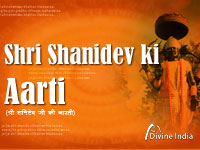

īśvaro gururātmeti mūrtibheda vibhāgine |
vyomavad vyāptadehāya dakṣiṇāmūrtaye namaḥ ‖
Meaning: Salutations to Lord Dakshinamurti, who is all-pervasive like space but who appears (as though) divided as Lord, Guru, and the Self.
The shloka "īśvaro gururātmeti mūrtibheda vibhāgine..." is a salutation to Lord Dakshinamurti, an aspect of Lord Shiva who represents the ultimate teacher and guru. Let's explore the meaning of this shloka:
Ishwara: Refers to the Divine or the Supreme Being, who is the source of all creation, preservation, and destruction.
Guru: Signifies the spiritual teacher or guide who imparts knowledge, wisdom, and guidance to seekers on the path of spirituality.
Atma: Represents the individual self or soul that is eternal and beyond the physical body.
Iti: This word indicates the end of a statement and signifies that the attributes mentioned before are attributed to the subject.
Murti Bheda Vibhagine: Refers to the one who manifests in various forms and aspects, while simultaneously transcending all forms and divisions.
Vyomavat: Like space, indicating the all-pervading nature of the deity.
Vyapta Dehaya: Signifies the embodiment that pervades everything, having a presence in all physical forms.
Dakshinamurtaye: This term is used to address Lord Shiva as the embodiment of Dakshinamurti, the supreme guru who imparts knowledge through silence and cosmic symbols.
Namah: A salutation or homage.
This shloka reveres Lord Dakshinamurti as the divine teacher who is both the Supreme Being and the ultimate guru. It acknowledges that the Divine encompasses everything, transcending all forms and divisions, and is present within and beyond all creations. Lord Dakshinamurti's form represents the embodiment of knowledge, wisdom, and spirituality, and his teachings guide seekers to the realization of the eternal truth.